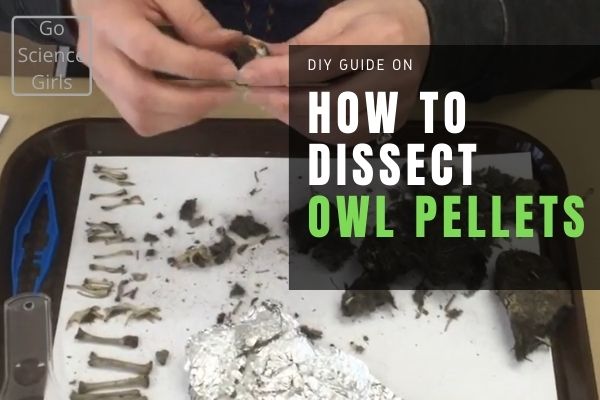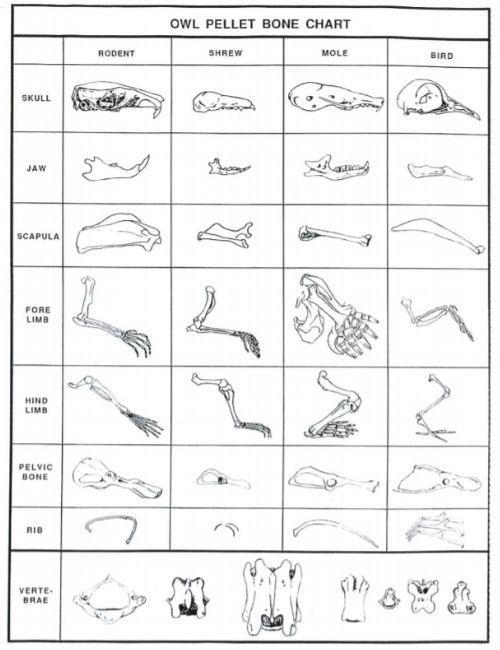The beautiful Owl is a mysterious bird worth studying. It flies at night and has an amazing ability to catch prey.
There is an unusual thing we want to know about them is their pellets; which are made from indigestible materials of an owl’s prey – and their digestive fluids, formed into slime-coated pellets.

An Owl tightly packs the indigestible materials from its last meal, what they have swallowed whole – including feathers, teeth, fur, and some bones.
Dissecting the owl pellets will show us what the owl has eaten. It’s weird; however, it could be so much fun and also give knowledge about an owl’s food habits, health, ecosystem, and much more.
YouTuber Olivia reveals some tips and tricks for collecting and cleaning a whole lot of mouse-bones from recovered from Owl Pellets! Watch this video broadcasted by SimplyOli YouTube Channel…
How To Dissect Owl Pellets And Clean Bones
In the above video, Olivia demonstrates about dissecting an owl pellet and how to clean the bones found within.
She used some of the dissection tools; like toothpicks, tweezers, water, hydrogen peroxide, and a few lidded jars. Moreover, she used owl pellets to create jewelry too!
Physiology Of The Owl
The Owls regurgitate the pellets about twenty hours after eating. The owl’s intestines have inadequate digestive enzymes, which can’t break down hard to digest stuff.
Alternatively, these are kept in an owl’s gizzard as other digestible substances pass through.
When the gizzard is full and a bullet ready to be ejected, an owl simply stretches its neck forward and forward as it opens its beak.
The pellet is expelled without any retching. Expelling a bullet in this way probes parts of an owl’s digestive tract.
Appearance Of The Pellets
The owl pellet will most often be brown or grey. The length of the owl-pellet is mostly 1.5 to 3.5 inches.
That depends on the size of the owl. Furthermore, they are usually coated in the fur of digestible creatures.
When a pellet is regurgitated, it is about the same shape as an owl’s gizzard and can be spherical, oblong-shaped, or thorn-shaped.
Diet For Owls
The content of an owl’s pellet is key indicators of an owl’s diet, which include small mammals or birds.
The bones of rats, mice, rabbits, squirrels, voles, and rodents have been spotted in the pellets of different owl species.
As with other birds, owls eat doves, pigeons, grouse, and even some varieties of songbirds such as sparrows and sorcerers. Some owl species have specialized diets which include fish, carrion, or insects.
Production Of Pellets
Most adult owls will produce two pellets per day. These can commonly be found under owl’s favourite perches, just because, this is where they halt to ingest prey. Though, young owls do not usually produce pellets, since their diet consists of pre-digested feed regurgitated to them by their parents. Furthermore, such pellets are common not only to owls but to all birds of prey, including eagles and hawks too; which consume their food whole.
What are Uses Of Owl Pellets?
Owl pellets are gathered for multiple purposes. Taxidermists hoping to restore and reconstruct the skeletons of small mammals or birds extract the bones from these pellets.

There are also industries around the collection of owl-pellets for school or educational use; the pellets are sterilized and individually packaged so that they can be sectioned. Some scientists conduct research and analysis based on the owl pellets content.
How To Sterilize Owl Pellets?
Note: Always keep in mind; before doing so, one needs to sterilize the pellet to kill all parasites and to mitigate the odour of the pellets themselves. And also require some tools too; such as rubber gloves, aluminium foil strips, water, oven, and a few lidded jars. Following are the instructions;
- Wear rubber gloves to keep away the smell of pellets from getting on your hands;
- Wrap the pellets individually with aluminium foil strips. Just a couple of layers of foil will suffice for this method;
- Put them in the oven, and bake them at 165 C. So, the heat will kill all the living organisms that may still be present in the pellet;
- Remove the owl pellets from oven after 30 minutes.
- Let the pellets cool down; at this point, they are sterile and set for the dissection process.
Dissolving Owl Pellets
Such modern activity-based biology science projects let learners investigate owl eating-habits as well as digestion through dissecting owl pellets. Not only in the schools but can be a fascinating project for kids at home too. You may find them on Amazon.
Summing up
Owls are nocturnal-flying creatures, humans are often afraid of them. Many societies and cultures are associated with darkness, negativity and mystery. However, their study of owl gives knowledge that how they function within the realm of nature, also offers the opportunity to observe these extremely intelligent creatures.
Know About: Olivia
Olivia – a mother, wife, author of “Back to Happy” and a mental health coach who lives in the beautiful city Denver, CO. Her purpose of life is to lead a strong positive life and help more women to do the same.
Moreover, she believes that life does not need to look right or perfect to be happy. You may also feel it through her videos, which are full of life. See Olivia’s real life on her YouTube channel called: SimplyOli.
Thank you!
Resources
- How To Dissect Owl Pellets And Clean Bones
- SimplyOli YouTube Channel
- Pellets Wikipedia
- Image Credit: https://www.youtube.com/watch?v=mWT3SoblvaM
- Owl Pellet bone chart & Guide for dissection: https://spencer.ca.uky.edu/files/032320_pavilion.pdf
